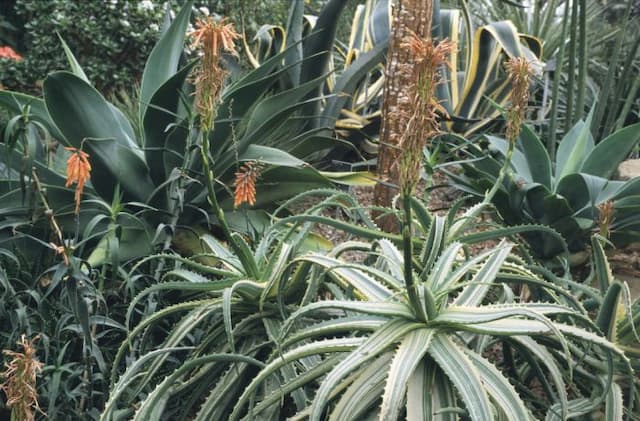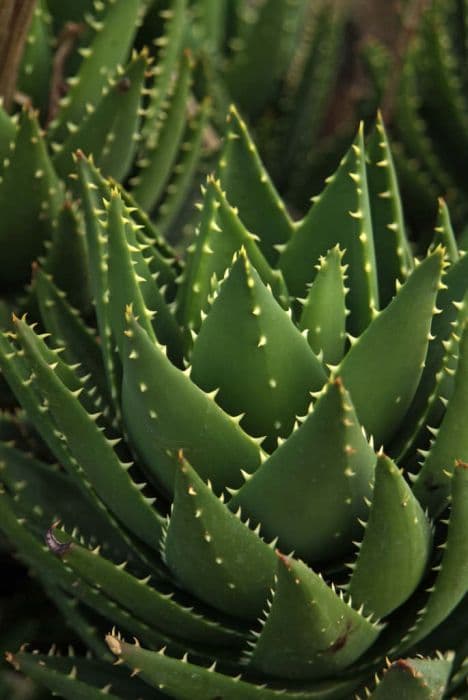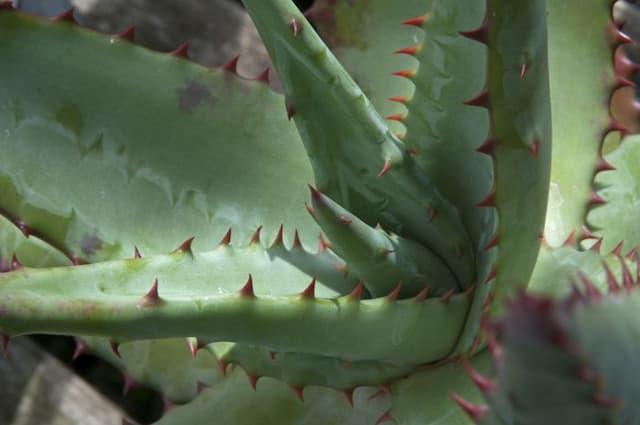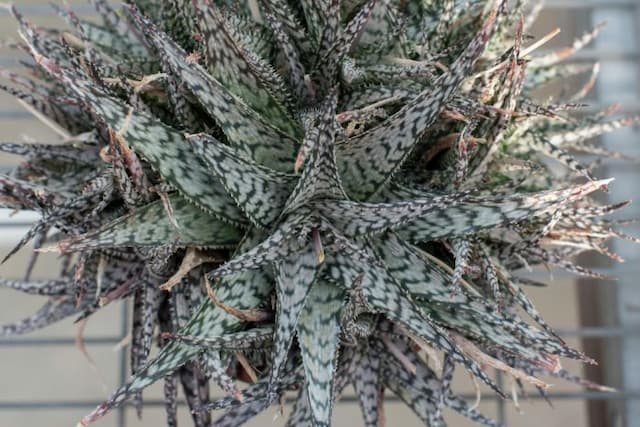King's Spear Asphodeline lutea

ABOUT
Asphodeline lutea, commonly known as King's Spear or Yellow Asphodel, is a perennial plant recognized for its striking and ornamental features. The plant boasts a rosette of narrow, linear leaves that resemble long blades of grass and are often grayish-green in color, creating a lush, tufted base. From this basal rosette emerges a tall, upright flower stem that is topped with a dense, spiky raceme of star-shaped, bright yellow flowers. Each flower has six delicate, petal-like segments that surround the central stamens and pistil, giving the bloom a symmetrical and eye-catching appearance. The King's Spear flowers stand out for their golden hue and are usually clustered tightly together, which adds a vibrant splash of color to the landscape during the blooming season. The flowering stem itself is sturdy and erect, enabling the raceme to rise gracefully above the foliage, giving the entire plant a slender and elegant profile. When in bloom, it attracts a variety of pollinators, including bees and butterflies, which are drawn to the flowers' nectar. The plant typically has a long blooming period that spans from late spring to early summer, depending on the climate. After flowering, seed pods may form, which contain numerous small, black seeds. These pods add textural interest to the plant even after the petals have fallen. Overall, the King's Spear presents a structured and statuesque presence in garden beds, borders, and wildflower meadows, offering a vertical element with its flower spikes and a touch of Mediterranean charm to any garden setting.
About this plant
 Names
NamesFamily
Asphodelaceae
Synonyms
King's Spear, Yellow Asphodel, Jacob's Rod
Common names
Asphodelus luteus, Asphodeline lutea subsp. juncioides, Asphodeline anthericoides.
 Toxicity
ToxicityTo humans
Asphodeline lutea, commonly known as King's Spear, is not widely regarded as a toxic plant to humans. There are no well-documented cases of poisoning in humans from ingesting or coming into contact with this plant. However, it is generally recommended to avoid eating or using parts of ornamental plants for medicinal purposes without proper knowledge and guidance, as individual sensitivities or allergic reactions can occur.
To pets
King's Spear is not specifically listed as a toxic plant to pets such as dogs and cats. However, as with humans, it is generally advisable to prevent pets from ingesting plants not meant for consumption, as they could potentially cause an upset stomach or an allergic reaction. If you suspect your pet has ingested any part of King's Spear and is showing symptoms of distress, it is best to consult with a veterinarian.
 Characteristics
CharacteristicsLife cycle
Perennials
Foliage type
Semi-deciduous
Color of leaves
Green
Flower color
Yellow
Height
2 feet (60 cm)
Spread
1 foot (30 cm)
Plant type
Herb
Hardiness zones
7
Native area
Mediterranean
Benefits
 General Benefits
General Benefits- Landscape Aesthetics: King's Spear's tall and striking yellow flowers add visual interest and beauty to gardens and landscapes.
- Drought Tolerance: Being native to Mediterranean regions, King's Spear is well adapted to dry conditions, requiring minimal water once established.
- Pollinator Attraction: The bright, showy flowers are attractive to bees and other pollinators, thereby supporting local ecosystems.
- Low Maintenance: King's Spear is generally resistant to pests and diseases, which means it doesn’t require much care or intervention to thrive.
- Seasonal Interest: With its early summer bloom time, King's Spear provides color and interest in the garden at a time when many other plants are not yet in flower.
- Soil Stabilization: The root system of King's Spear can help to prevent soil erosion, making it a good choice for planting on slopes or in other erosion-prone areas.
- Cultural Significance: King's Spear has historical and mythological importance in its native regions, which can add a layer of interest for those who enjoy plants with a story.
 Medical Properties
Medical Properties- Anti-inflammatory: Asphodeline lutea contains compounds that may help reduce inflammation.
- Antioxidant: Possesses antioxidants which can help protect cells from damage caused by free radicals.
- Antimicrobial: Demonstrates antimicrobial activity which might help in fighting certain bacterial infections.
- Hepatoprotective: There is evidence that suggests the plant may have properties that protect the liver.
- Cytotoxic: Some studies indicate that Asphodeline lutea may have cytotoxic effects, which could be useful in cancer therapies.
- Diuretic: Traditionally, it has been used to promote the production of urine, aiding in the removal of excess water and toxins from the body.
 Air-purifying Qualities
Air-purifying QualitiesThis plant is not specifically known for air purifying qualities.
 Other Uses
Other Uses- Asphodeline lutea, commonly known as King's Spear, can be used as a source of fiber for textiles; its tough, stringy leaves have historically been used for weaving into small fabrics or cords.
- The dried stalks of King's Spear are sometimes utilized in floral arrangements and dried bouquets for their striking height and structure.
- In some traditional practices, King's Spear plants are considered a symbol of peace and placed on graves, which is where the association with the Elysian fields comes from in Greek mythology.
- The robust nature of King's Spear makes it a useful plant for creating natural garden borders or living fences to delineate spaces within a garden setting.
- The plant's tall, yellow flower spikes can be utilized as a natural dye, producing a range of yellow hues for textiles and crafts.
- King's Spear can serve as a natural pest repellent in gardens, as some insects avoid the plant due to its toxicity.
- Gardeners may use the plant to create interesting visual dimensions in rock gardens due to its vertical growth and flowering spikes.
- In education, King's Spear is sometimes used in botany classes for studying plant structure and adaptations to dry environments.
- Its resilience and low maintenance make King's Spear a suitable choice for xeriscaping projects, which aim to create landscapes that require little to no irrigation.
- Culinary experimentation with the edible buds and flowers of King's Spear may find them being pickled or used as a garnish in some adventurous modern cuisine.
Interesting Facts
 Feng Shui
Feng ShuiThe King's Spear is not used in Feng Shui practice.
 Zodiac Sign Compitability
Zodiac Sign CompitabilityThe King's Spear is not used in astrology practice.
 Plant Symbolism
Plant Symbolism- Regeneration and Renewal: Asphodeline lutea, known as King's Spear, is often associated with regeneration and the renewal of life, possibly because it flourishes in the spring, which is traditionally seen as a time of rebirth.
- Overcoming Adversity: The ability of the King's Spear to grow in poor soils and its hardy nature symbolize the human ability to overcome challenging circumstances and adversity.
- Eternal Rest: In ancient mythology, asphodel is related to the afterlife and Elysian fields, and thus King's Spear can symbolize a desire for eternal peace or rest.
- Remembrance: Due to its mythological connections with the dead, the King's Spear is sometimes associated with remembrance, reflecting on past events or honoring those who have passed away.
- Beauty and Grace: With its tall, striking yellow spikes of flowers, the King's Spear embodies beauty and grace, symbolizing appreciation for the aesthetic and delicate aspects of life.
 Water
WaterKing's Spear requires moderate watering during the growing season, and it's often enough to provide about one inch of water per week. Watering should be done deeply to ensure the water reaches the root zone, ideally early in the morning to allow foliage to dry out during the day. During the winter or during periods of dormancy, reduce watering significantly to prevent root rot, supplying only enough water to keep the soil from becoming completely dry. Overwatering can be detrimental to the King's Spear, so ensure good drainage and check the soil moisture before watering to avoid soggy conditions.
 Light
LightKing's Spear thrives in full sun conditions, requiring at least six hours of direct sunlight daily to flourish. The best spot for this plant is in an area where it can receive ample sunlight without obstruction, such as an open garden bed or a southern exposure if grown indoors. While it can tolerate some light shade, especially in the hottest parts of the day, too much shading can lead to poor flowering and weak growth.
 Temperature
TemperatureKing's Spear is best suited to temperate climates and can survive minimum temperatures down to around 10 degrees Fahrenheit. However, the ideal temperature range for this plant is between 60 and 75 degrees Fahrenheit. It is a hardy plant that can withstand some temperature fluctuations, but extended periods of extreme cold or heat can be detrimental to its health and vigor.
 Pruning
PruningKing's Spear benefits from pruning to remove spent flower spikes and encourage a second bloom. Prune the flower stems back to the base after the initial flowering, usually in late spring or early summer. Additionally, trimming off any damaged or dead foliage can promote better air circulation and overall plant health. Pruning should be done with clean, sharp tools to minimize stress to the plant.
 Cleaning
CleaningAs needed
 Soil
SoilKing's Spear thrives best in a well-draining soil mix, typical of Mediterranean plants. A mix of two parts sand, one part loam, and one part compost with a bit of gravel for added drainage is ideal. The soil pH should be slightly alkaline, around 7.5 to 8.0.
 Repotting
RepottingKing's Spear does not require frequent repotting; once every 2-3 years should suffice as it prefers not to be disturbed often. Ensure a well-draining soil mix when repotting this plant.
 Humidity & Misting
Humidity & MistingKing's Spear is tolerant of a wide range of humidity levels and does best in an environment that is not too humid, resembling its native habitat in the Mediterranean region.
 Suitable locations
Suitable locationsIndoor
Ensure bright light, well-draining soil, and rare watering.
Outdoor
Plant in full sun, well-drained soil, and protect from harsh winds.
Hardiness zone
5-9 USDA
 Life cycle
Life cycleKing's Spear, or Asphodeline lutea, begins its life as a seed that germinates in the soil, usually requiring well-drained conditions and full sunlight. The seedling develops into a plant with a rosette of fleshy, linear leaves, during which it undergoes vegetative growth. As the plant matures, usually in its second year, it produces a tall, erect flower spike that bears bright yellow, star-shaped flowers, which are pollinated by insects such as bees. After pollination, the flowers develop into capsule-like fruits that release seeds when they mature, completing the reproductive stage. Throughout the growing season, the plant stores energy in its rhizomes, which helps it survive through the winter when the aerial parts die back. The King's Spear repeats this cycle annually, with the rhizomes giving rise to new growth each spring.
 Propogation
PropogationPropogation time
Spring to early summer
Propogation: The most popular method of propagation for Asphodeline lutea, commonly known as King's Spear, is by seed. The best time to sow the seeds is in late winter or early spring. The process involves scattering the fine seeds over the surface of a well-draining seed starting mix and lightly pressing them into the soil without covering, as they require light for germination. It is important to keep the soil consistently moist but not waterlogged. Positioning the pot in a warm area with bright, indirect light will provide an ideal environment for seedlings to emerge, typically within a few weeks. Once the seedlings have developed true leaves and are large enough to handle, they can be carefully transplanted into individual pots to grow on before eventually being moved to their final position in the garden.









